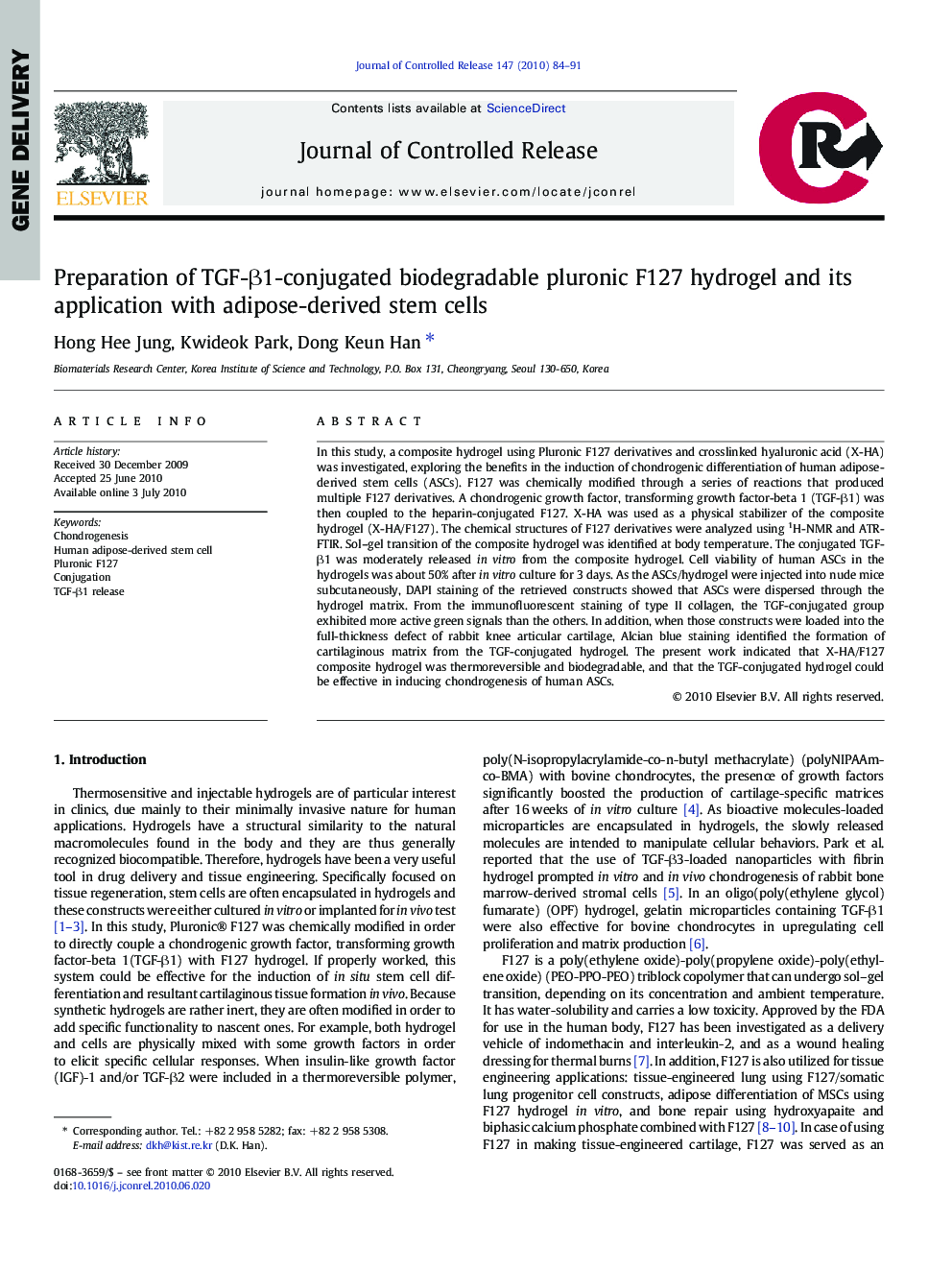| Article ID | Journal | Published Year | Pages | File Type |
|---|---|---|---|---|
| 1425474 | Journal of Controlled Release | 2010 | 8 Pages |
In this study, a composite hydrogel using Pluronic F127 derivatives and crosslinked hyaluronic acid (X-HA) was investigated, exploring the benefits in the induction of chondrogenic differentiation of human adipose-derived stem cells (ASCs). F127 was chemically modified through a series of reactions that produced multiple F127 derivatives. A chondrogenic growth factor, transforming growth factor-beta 1 (TGF-β1) was then coupled to the heparin-conjugated F127. X-HA was used as a physical stabilizer of the composite hydrogel (X-HA/F127). The chemical structures of F127 derivatives were analyzed using 1H-NMR and ATR-FTIR. Sol–gel transition of the composite hydrogel was identified at body temperature. The conjugated TGF-β1 was moderately released in vitro from the composite hydrogel. Cell viability of human ASCs in the hydrogels was about 50% after in vitro culture for 3 days. As the ASCs/hydrogel were injected into nude mice subcutaneously, DAPI staining of the retrieved constructs showed that ASCs were dispersed through the hydrogel matrix. From the immunofluorescent staining of type II collagen, the TGF-conjugated group exhibited more active green signals than the others. In addition, when those constructs were loaded into the full-thickness defect of rabbit knee articular cartilage, Alcian blue staining identified the formation of cartilaginous matrix from the TGF-conjugated hydrogel. The present work indicated that X-HA/F127 composite hydrogel was thermoreversible and biodegradable, and that the TGF-conjugated hydrogel could be effective in inducing chondrogenesis of human ASCs.
Graphical AbstractFigure optionsDownload full-size imageDownload as PowerPoint slide
